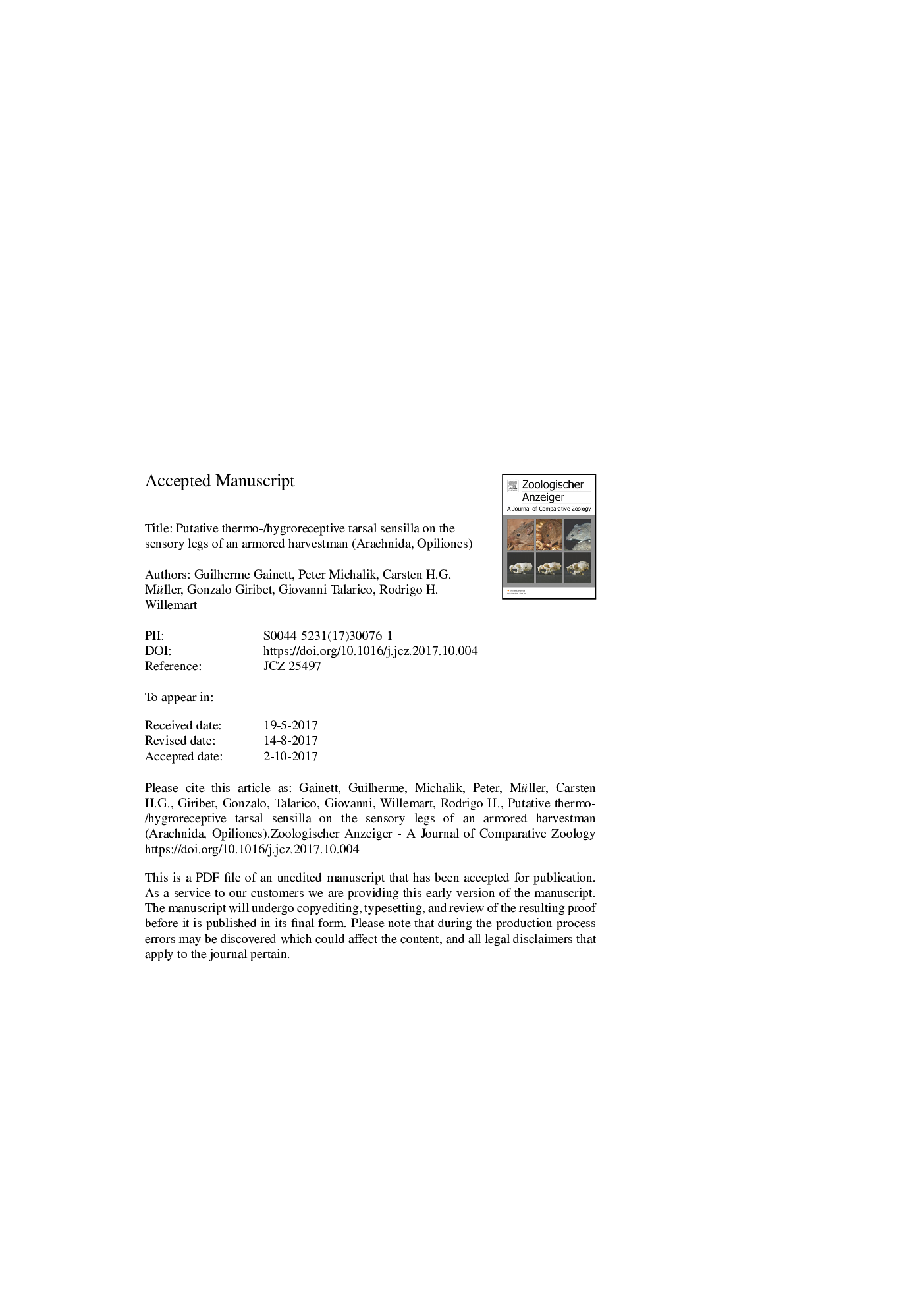| Article ID | Journal | Published Year | Pages | File Type |
|---|---|---|---|---|
| 5586403 | Zoologischer Anzeiger - A Journal of Comparative Zoology | 2017 | 37 Pages |
Abstract
Most harvestman species are dependent on high humidity levels and amenable temperatures for homeostasis. While they are known to actively choose environments with these conditions, no thermo-/hygroreceptor has yet been identified in harvestmen. Using electron microscopy, we investigated the ultrastructure of two types of hair sensilla of the armored harvestman Heteromitobates discolor (Laniatores, Gonyleptidae): namely the sensillum basiconicum and the hooded sensillum. Both structures occur in small numbers (sensilla basiconica: 28 units; hooded sensilla: 4 units) and are distributed on the distal parts of the legs. On the distalmost tarsomeres I and II, the receptor cells of paired sensilla basiconica and single hooded sensillum occupy a large volume of the inner tissue, and appear tightly associated. The sensillum basiconicum is innervated by 3-4 dendrites and has a longitudinal slit giving the impression of a shaft with two flaps, resembling a beak. The slit probably allows for evaporation of sensillum lymph. The hooded sensillum is innervated by two bundles of three dendrites each, has two pore-like structures on its tip and displays an unusual reticulate cuticle of the shaft. Details of shaft cuticle, the evidence of evaporation of sensillum lymph, and specific innervation patterns support our hypothesis that sensilla basiconica are thermo- and/or hygroreceptors. Even though the definite function of hooded sensilla remains unclear, its putative receptor modalities are assessed by means of specific ultrastructures. Finally, we discuss with regard to functional ultrastructures as to whether the evaporation system of sensilla basiconica fits mechanisms of hygroreception as known from current literature.
Related Topics
Life Sciences
Agricultural and Biological Sciences
Animal Science and Zoology
Authors
Guilherme Gainett, Peter Michalik, Carsten H.G. Müller, Gonzalo Giribet, Giovanni Talarico, Rodrigo H. Willemart,
